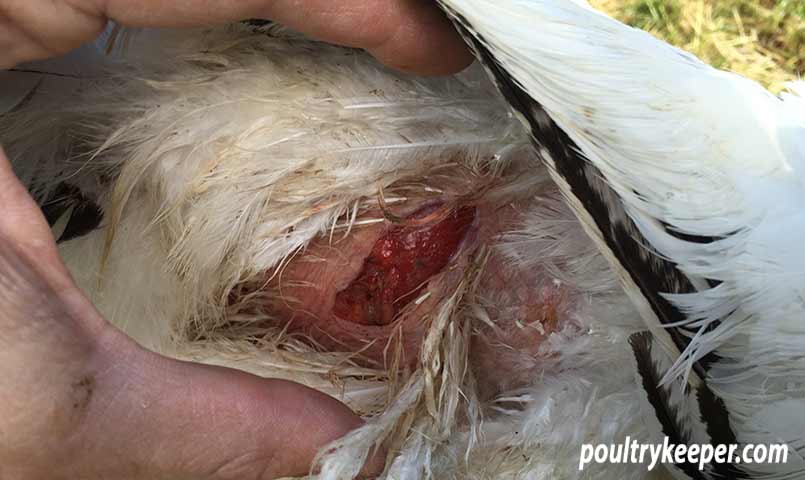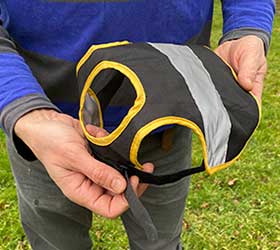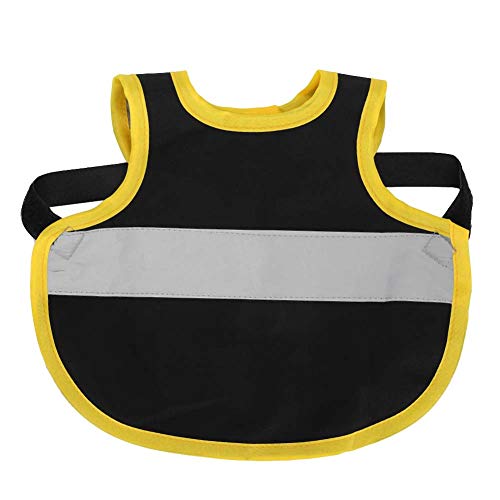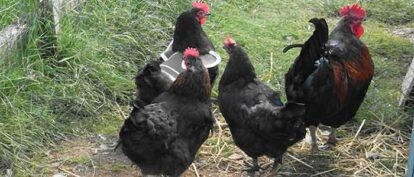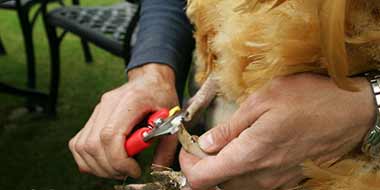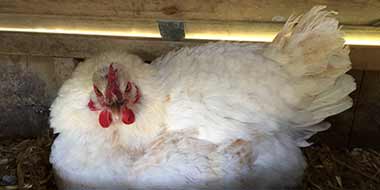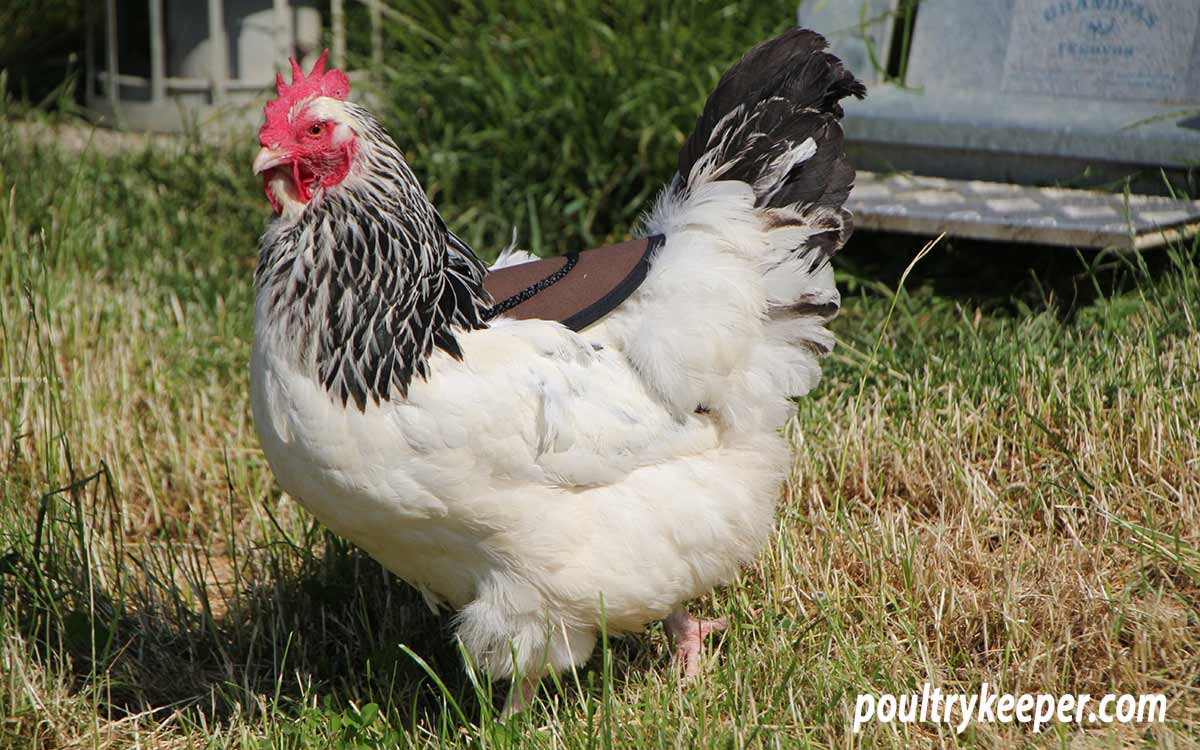
In this guide, I explain what poultry saddles are, and how we can fit one to protect a hen’s back from a cock’s feet and spurs during the breeding season.
Poultry saddles prevent feather loss when a cock mates with a hen. After a short time into the breeding season (and it doesn’t take long if you have only a few hens to a cock), you may notice some of your hens start to lose feathers on their backs where the cock has been treading.
It is common for cocks to have favourite hens, so it can be just one or two hens that need a poultry saddle fitted. In smaller flocks, (or if you have a very active cock bird), you may find most of your hens will need protecting with saddles. It’s usually better to increase the number of hens in the flock to take some of the pressure off the hens in the long run.
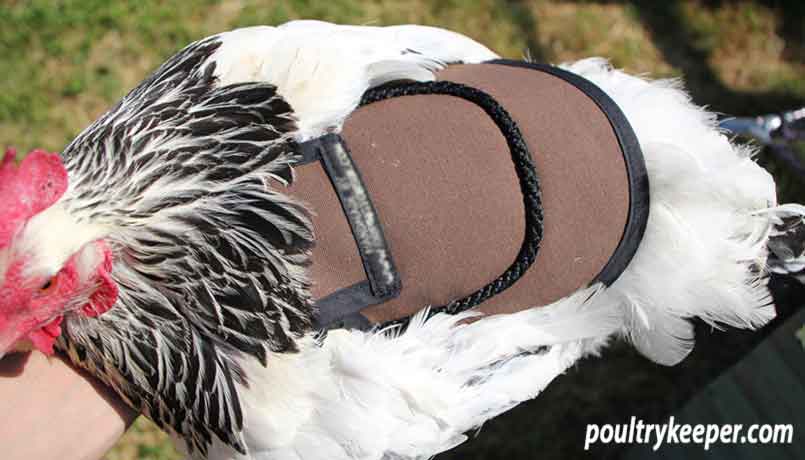
What are poultry saddles?
A poultry saddle is a thick piece of material like leather or canvas that fits onto the back of your hen, protecting her from the cock’s feet and spurs during mating.
Nails and spurs shouldn’t be allowed to get too long, or they will still cause damage, even with a saddle fitted.
You can trim rooster spurs, but don’t take too much off at once, because, they will bleed.
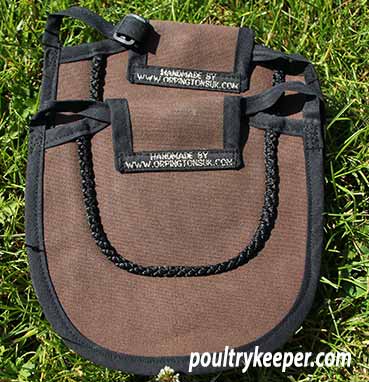
Keeping a careful watch during the breeding season
Mating is quite a quick affair. Hens usually prefer a dominant cock. In a mixed flock with more than one male, the lower male in the pecking order will usually run in and catch a hen unaware so that he can mate with her before she gets away or the more dominant cock arrives to see him off!
This behaviour can also result in him grabbing a hen by the scruff of the neck aggressively, and climbing onto her back roughly, causing more damage than usual.
Inspect your hens regularly, especially if they have lost feathers. They often hide a wound behind their wings. Always remove the cock or the damaged hen if the skin is broken and treat the wound accordingly.
I have put the image of a spur wound on the side of a hen in a ‘drop down’ below. I appreciate not everyone will want to see an image like this.
When do you need to fit poultry saddles?
Saddles usually only need to be used during the later part of the breeding season over the late spring and early summer months. During autumn, your birds will be going through a moult when they stop laying eggs and replace their feathers. The males will not be very active during this time.
During the winter months, males are far less active, and there is no need to use a poultry saddle.
Fitting a poultry saddle
Step-by-step
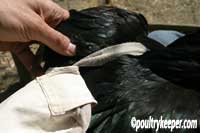
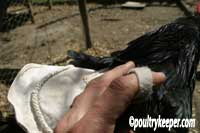
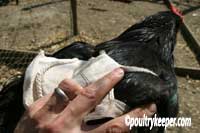
It is a straightforward job to fit a poultry saddle. You can pull the strap through the centre to enlarge one side, a wing can be slipped through (as shown in the first photo below), and then the strap can be pulled tight, allowing the second strap to enlarged, and the second wing pulled through, although some saddles now have adjustable velcro straps.
Recommended
Poultry Saddle
I have tried a few different poultry saddles over the years and my favourite at the moment is this one, sold on Amazon. There are a few different sellers offering the same design.
It has adjustable elastic, velcro straps for the wings but also a loop to go around the neck.
It is durable and fits well, it stays in place and is a good size for medium and large hens.
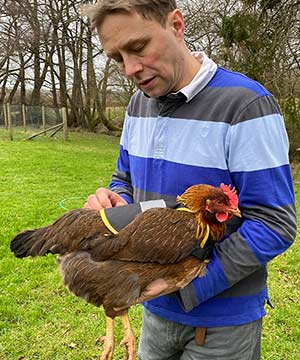
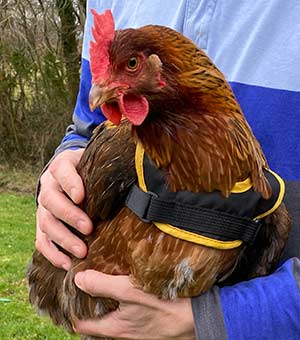
So now you know about poultry saddles and how these protect hens from the claws and spurs of the cock bird during the breeding season.
Before you rush off to fit poultry saddles to your hens, remember it can also help to trim rooster spurs.

